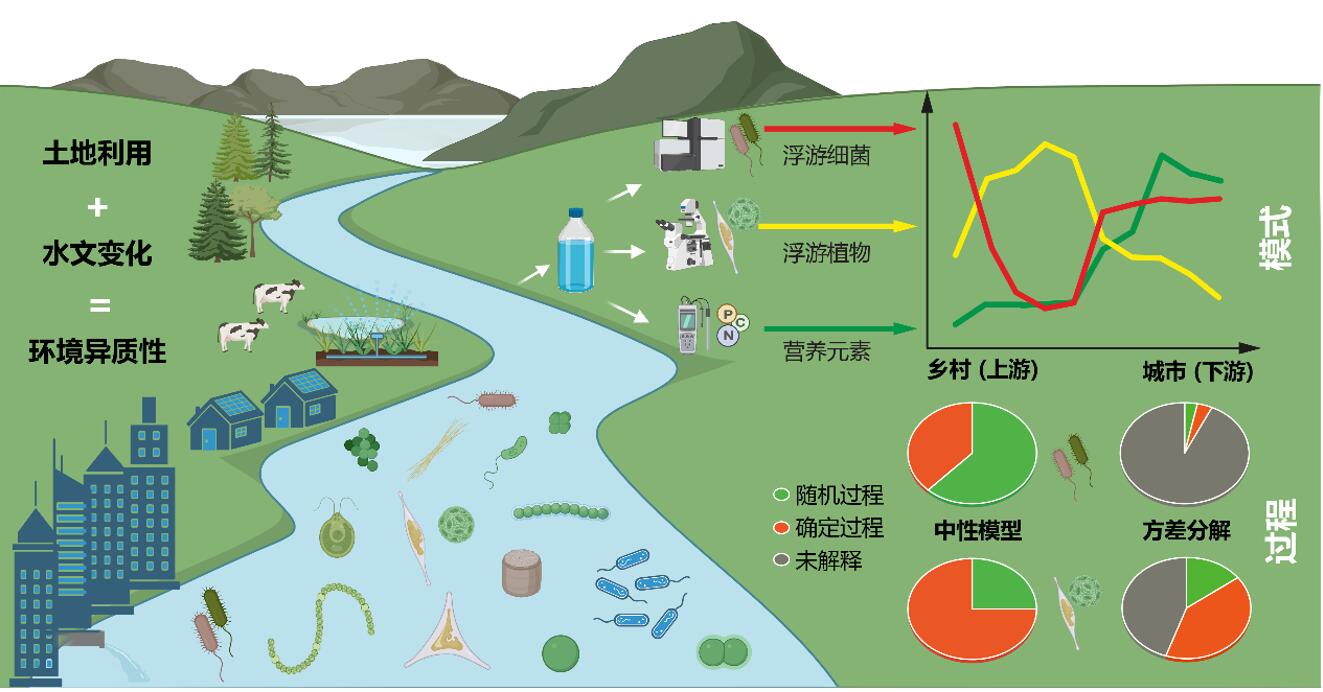| Location: Home > Papers |
| First Author: | Alain Isabwe |
| Abstract: |
Longitudinal environmental heterogeneity and directionality of the water movement are key features that may exert contrasting forces on riverine plankton assembly. Directionality strengthens dispersal-driven assembly, but this can be masked by urbanization-induced environmental heterogeneity along the river continuum. In the light of this contrast, we aimed at delineating the relative importance of assembly processes generating distribution patterns of bacterioplankton and phytoplankton communities in a river draining an urbanizing watershed in Southeast China. We applied variation partitioning analysis, neutral community model, and quantitative process estimate on molecular and morphological plankton data obtained over the years 2012-2016. Despite a relatively short distance between sampling sites (<?20?km), plankton community similarity decreased with increasing distance from the upstream pristine site toward the downstream urban area, and formed clusters that roughly corresponded to five habitat patches, predefined based on hydrology and longitudinal landscape change. These distribution patterns were predominantly driven by deterministic and stochastic processes for phytoplankton and bacterioplankton, respectively, indicating a balance between dispersal due to fluvial connectivity and local selective pressures. Considering the global loss of river connectivity due to downstream fragmentation and flow regulation, our findings imply that plankton-based ecological approaches could be useful to hedge against an uncertain future of rivers draining urbanizing watersheds in an ecologically sustainable way.
|
| Contact the author: | YANG Jun |
| Page Number: | |
| Issue: | |
| Subject: | |
| Impact Factor: | |
| Authors units: | |
| PubYear: | July 2022 |
| Volume: | |
| Publication Name: | LIMNOLOGY AND OCEANOGRAPHY |
| The full text link: | https://doi.org/10.1002/lno.12179 |
| ISSN: | |
| Appendix: |
